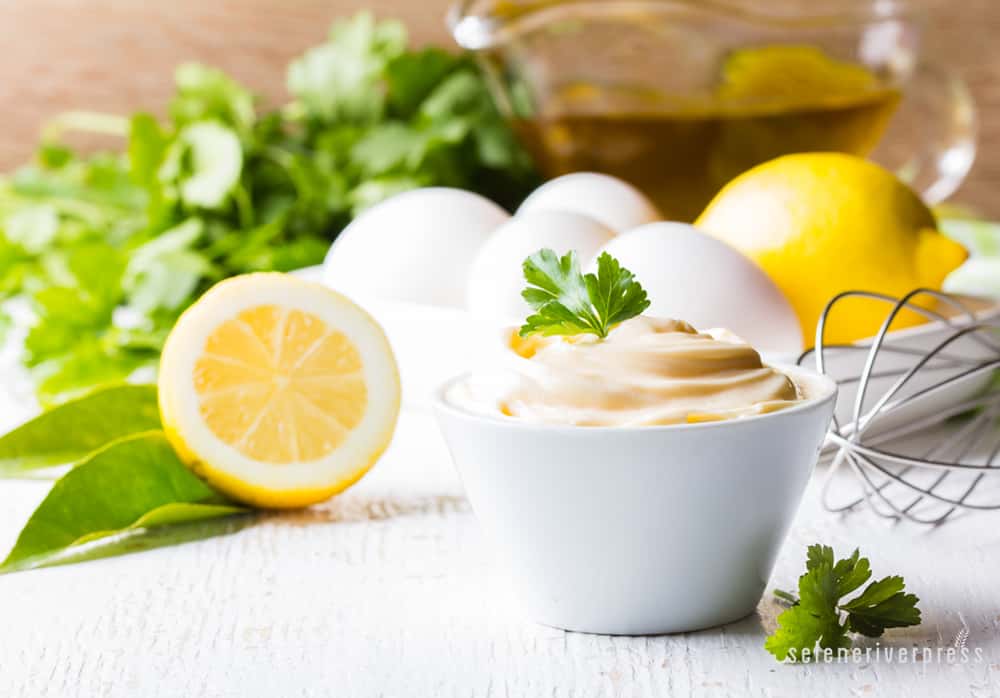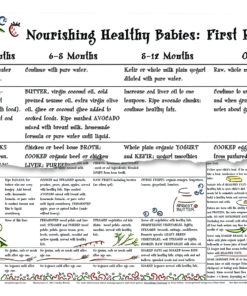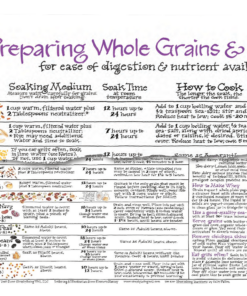Mayonnaise. Mayo. A favorite condiment in the U.S. of A. You’ll find some Hellman’s or Kraft in just about every sandwich shop, burger joint, and refrigerator. But unfortunately, mayo is no longer a healthy option for us. Read on to learn why.
The Original Mayonnaise
There are conflicting opinions on when and where mayonnaise (originally mahonnaise or meyonnaise) was invented. However, we know that it originated somewhere in France, between the years of 1589–1756. What may have started out as a sauce made from cream and egg yolks became a sauce made from olive oil and egg yolks. Ah…olive oil! In 1912, a German immigrant in New York City named Richard Hellman started producing his Blue Ribbon Mayonnaise and selling it in jars. Hellman’s recipe was simple: raw egg yolks, vegetable oil, vinegar, and small amounts of salt, sugar, and seasoning. Who knows what that vegetable oil was? (What is vegetable oil, anyway? I don’t know of any vegetables that are very oily, do you? I mean, besides olives?) It was probably cottonseed oil, which is an industrial by-product. (To learn more about how vegetable oils are produced, read “The Skinny on Fats” by Sally Fallon and Mary G. Enig.)
The Bad Oils Continue Today
These days, if you look at the list of ingredients on a jar of mayonnaise, you’ll find highly processed, manmade soy and canola oils right at the top. Even on jars that tout “Olive Oil Mayonnaise,” you won’t find any olive oil until you get to the third or fourth ingredient. Soy oil will be first. What’s wrong with soy and canola oils? To begin with, both oils are highly processed. And the similarities don’t stop there:
Soy: These are high in phyto-estrogens and omega 6s. The former is a “goitrogen,” which suppresses your thyroid gland. Also, unless it has an organic label, you can bet it’s genetically modified (GM). Over 90 percent of soy in the world at this time is GM.
Canola: This genetically modified oil was created in Canada from rapeseed (originally known as low-erucic acid rapeseed). It was renamed to honor its Canadian origins. Like soy oil, canola is high in omega 6s. Though it goes rancid when bottled, canola oil is deodorized to disguise the odor. Canola oil has been implicated in liver and kidney problems, and because it is GM, it should be regarded as highly toxic.
Make Your Own Mayonnaise!
But you love that sauce on your sourdough sandwich! What to do? Make your own! It’s easy and delicious. And when you make it yourself, you can control the ingredients and turn a health liability into an enzyme-rich super sauce!
Homemade Mayonnaise
This will be thinner than the mayonnaise you’re probably used to. However, it will thicken with time. You may add more egg whites or additional coconut oil for a firmer batch. For the whey: Place a small strainer over a measuring cup; line the strainer with a cheesecloth or cotton towel; scoop organic, whole-milk, plain yogurt into the strainer. The liquid whey will strain out from the yogurt solids. Makes 1½ cups.
Ingredients
1 whole, pastured egg, room temperature
2 pastured egg yolks, room temperature
1 forkful mustard (preferably fermented, or Dijon style)
Juice of 3 organic lemons
1 tablespoon whey (see above)
¼ teaspoon Celtic salt
1 cup unrefined extra virgin olive oil (or combine ¼ cup unrefined extra virgin olive oil with ¼ cup extra virgin coconut oil and ½ cup unrefined sesame oil in a liquid cup measure)
Instructions
- Combine whole egg, egg yolks, mustard, 2 tablespoons of the lemon juice, whey, and salt in the bowl of a food processor. Pulse until well incorporated.
- With the motor running, add the olive oil or combination of oils drop by drop to the food processor to form a mixture with the consistency of a thin cake batter. Taste. Add salt and/or more lemon juice as needed.
- Transfer to a clean 1-pint glass jar. Seal tightly and let sit at room temperature for 7 hours, then transfer to the refrigerator. (If using a canning jar such as Ball brand, make sure the lid is taut.) The mayonnaise can be refrigerated for several months. It will become firmer as it ages.
Looking for more great nutrient dense recipes and information? Check out my ongoing book series titled Cooking Techniques for the Gut and Psychology Syndrome Diet:
AUTHOR’S NOTE
To choose your organically grown and fresh ingredients wisely, use the following criteria:
- chemical- and hormone-free meat
- wild-caught fish
- pasture-raised, organic eggs
- whole, unrefined grains
- virgin, unrefined, first-press organic oils
- whole-food, unrefined sweeteners
- pure, clean, spring water
- sea salt
- raw and/or cultured milk and cream products
Photo from iStock/LarisaBlinova




